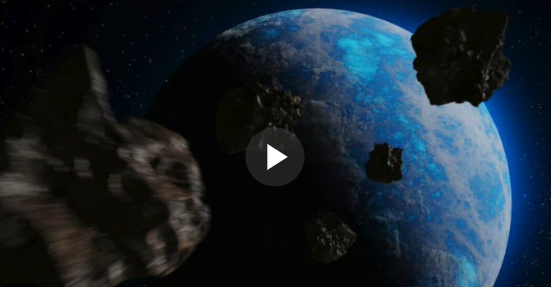Folks, if a big one like the one that killed the dinosaurs off, which they say was 6 miles long, were to hit the Earth, it’s over. At least for many thousands if not millions of years. But the small ones we can do something about.
In a recent NASA-led simulation, concerns were raised about humanity’s preparedness to counter a potential asteroid threat with a 72% likelihood of striking Earth in 14 years. This exercise, conducted by NASA and the Federal Emergency Management Agency, involved nearly 100 government and international representatives, including figures from the State Department and the U.N.’s Office for Outer Space Affairs. It was held at the Johns Hopkins Applied Physics Laboratory in Laurel, Maryland.
There’s A 72% Chance That An Asteroid May Hit Earth On This Exact Day pic.twitter.com/cRIxNLvvyx
— B.C. Begley (@BC_News1) June 24, 2024
During the exercise, which marks the fifth such test and the first to include international collaborators on planetary defense, participants confronted the daunting scenario of an asteroid predicted to hit Earth in 2038. The simulated impact suggested a 47% chance of affecting over 1,000 people and an 8% probability of impacting over a million, with potential strike zones spanning cities in the U.S., Europe, and Africa.
One critical challenge highlighted was the delay in further observations of the asteroid due to its position behind the Sun, costing vital months of preparation time. The simulation underscored gaps in readiness, particularly in rapid deployment of space missions and public communication strategies. Only 33% of participants felt prepared to launch a preventative space mission, and many were concerned about the adequacy of reconnaissance missions.
Asteroid to hit earth on 12th July 2038,Planetary defense exercise began as NASA issued alert for 14.25 Years ; the asteroid said to be 88 ft. airplane size and may have 72% chance that it may hit Earth! pic.twitter.com/HesFFsE2qw
— GossipsTv(GTv) (@GossipsTv) June 24, 2024
NASA’s acting planetary defense officer, Kelly Fast, emphasized the importance of such exercises, stating they are crucial in fostering interagency and international coordination in response to such threats. The only proven method to potentially alter an asteroid’s course, as demonstrated by NASA in 2022, involves kinetic impact—using a spacecraft to physically alter the asteroid’s trajectory. This method successfully adjusted the orbit of Dimorphos, a moonlet of the asteroid Didymos.
However, the effectiveness of kinetic impact varies with the asteroid’s size and other characteristics, suggesting that different scenarios may require tailored approaches. The exercise also revealed concerns about sufficient federal funding and the clarity of the decision-making process in such high-stakes situations. Moreover, managing public information and countering misinformation were identified as significant challenges, with participants stressing the importance of clear and timely communication to maintain public trust.
NASA alert! A ‘never-before-detected’ Asteroid may have 72% chance that it may hit Earth on 13/07/2038. pic.twitter.com/a5g1dZMmPG
— JISHNUANANTH.S (@jishnuananth) June 25, 2024
This simulation serves as a proactive measure to assess and enhance readiness for potential celestial threats, highlighting ongoing efforts to improve response strategies and technologies. Fast reassured the public that continuous planning and testing are underway to ensure that agencies are better prepared for future threats, viewing these exercises as beneficial for refining global readiness and response capabilities. As of now we still have no real way to stop any asteroid from hitting the Earth with any certainty.
Major Points:
- NASA conducted a simulation revealing a 72% chance of an asteroid hitting Earth in 14 years, exposing gaps in global preparedness and response capabilities.
- The exercise, involving international partners, assessed the impact likelihood on over a million people across the U.S., Europe, and Africa.
- Participants identified major readiness issues, including the ability to launch preventive space missions and the adequacy of reconnaissance efforts.
- The only proven asteroid deflection method is kinetic impact, which was successfully tested by NASA in 2022 but may not be suitable for all asteroid sizes.
- The simulation highlighted challenges in securing sufficient funding, making clear decisions, and effectively communicating with the public to manage misinformation.
Conner T – Reprinted with permission of Whatfinger News



